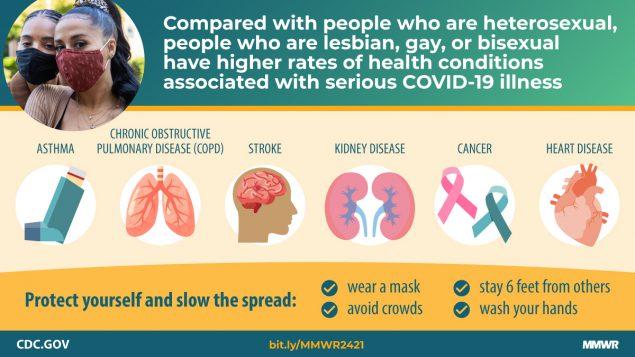Sexual Orientation Disparities in Risk Factors for Adverse COVID-19–Related Outcomes, by Race/Ethnicity — Behavioral Risk Factor Surveillance System, United States, 2017–2019
Kevin C. Heslin, PhD; Jeffrey E. Hall, PhD
Summary
What is already known about this topic?
Risks for COVID-19 acquisition and severe associated illness vary by characteristics, including race/ethnicity, age, and urban/rural residence. U.S. COVID-19 surveillance systems lack information on sexual orientation, hampering examination of COVID-19–associated disparities among sexual minority adults.
What is added by this report?
Sexual minority persons in the United States have higher self-reported prevalences of several underlying health conditions associated with severe outcomes from COVID-19 than do heterosexual persons, both in the overall population and among racial/ethnic minority groups.
What are the implications for public health practice?
Inclusion of sexual orientation and gender identity data in COVID-19 surveillance and other data collections could improve knowledge about disparities in infections and adverse outcomes among sexual and gender minority populations, overall and by race/ethnicity.
For the full report, click here.

